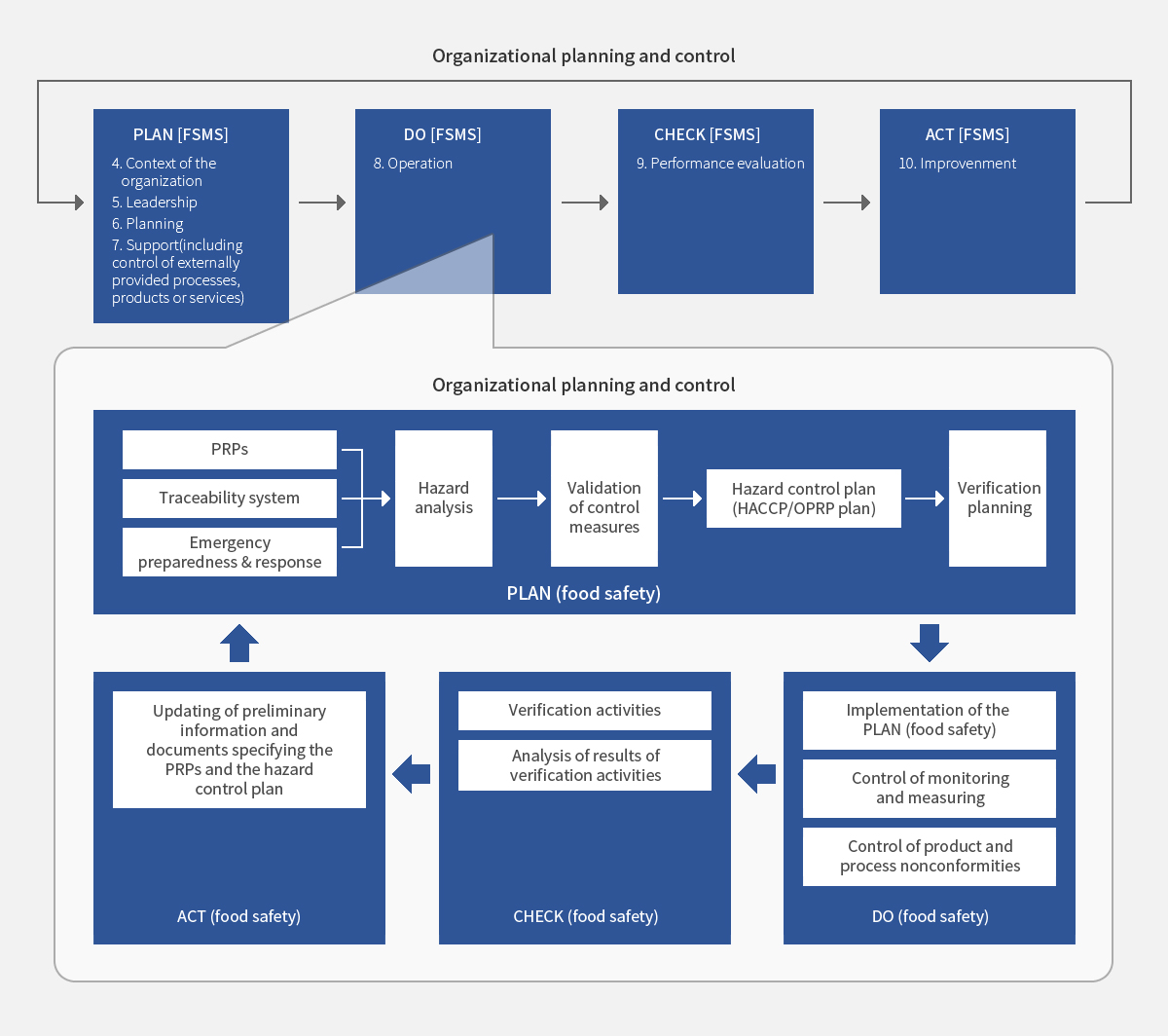
It is an international standard about food safety management systems, which published by ISO(the International Organization for Standardization).
Food safety is, the prevention, elimination and control of harmful factors caused by food, from the food production to food consumption.
Risk to food safety can be in any steps of process, therefore every organization involved in food chain should implement the appropriate risk controls.
In fact, food safety can be maintained through efforts not only of the manufacturer, but also of governments, sellers, and consumers.
ISO 22000 regulates food safety management system requirements in food chain to international level.
Especially, it is intended to be applied by organizations that pursue consistent and integrated food safety management system that is more clear than generally
required by law. This standard also requires the organization to fultil all applicable food safety related legal and regulatory requirements through its food safety
management system.
ISO 22000:2018 is the latest food safety management system standard applied ISO/IEC Directives, Part 1 (Consolidated ISO Supplement-Procedures specific to ISO),
Annex SL9 High Level Structure.
This standard addresses the process approach and risk-based thinking, and it requires the organization's FSMS to include following key elements:
In addition, it is based on the principles that are common to ISO management system standards. The management principles are:

Contact Person
kgb@icrqa.com
lee2750@icrqa.com